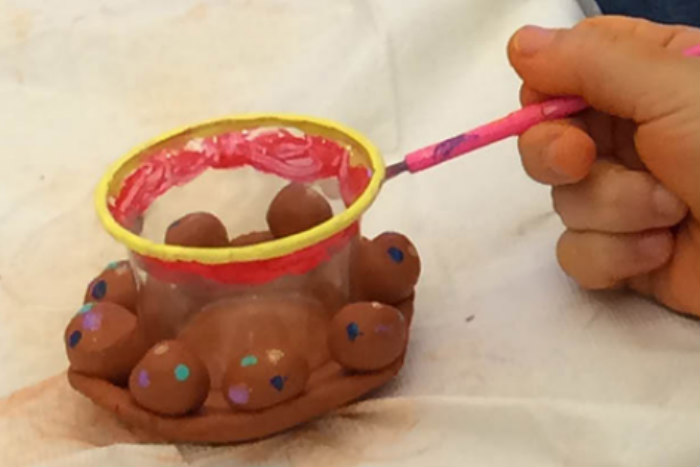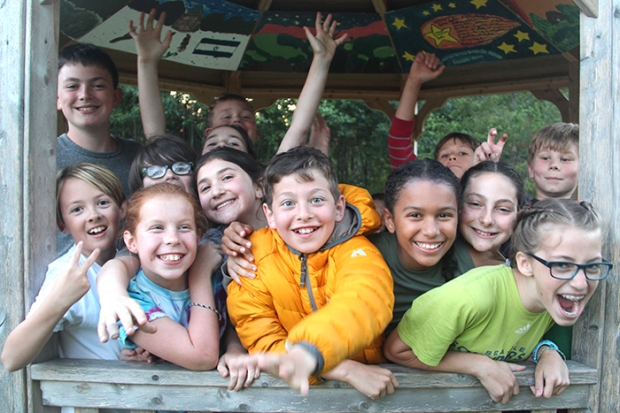
As we enter into the festival of Hanukkah and celebrate the miracle of the oil lasting eight nights, we also awaken into a time to honor family and friends with expressions of gratitude and generosity.
Hanukkah is filled with so many traditions. Many families begin with the retelling of the Hanukkah story, ritual candle lighting, dreidel games and of course making savory and delicious and . Many families have shared that they dedicate a night of Hanukkah to book swaps, projects, and to giving . There are so many wonderful ways to bring families together during the season of light.
You might want to try lantern making for a night time nature walk, awakening your senses as you connect in the beauty of the night air. A sweet and aromatic clementine can bring illumination with symbolic carvings.
Here's another idea to consider for your one of your eight nights of Hanukkah. Lighting an oil lantern is a wonderful way to illuminate your retelling of the story of Hanukkah. As you create a symbolic reminder of the cruse of oil that was found in the ancient temple, you are also creating a new family tradition.

Materials
- A clean glass jar (baby food size or empty votive works well)
- A floating wick
- Acrylic paint and brushes (or substitute pain pens)
- Water (for rinsing brushes)
- Dabbers/rag (for dabbing paint brushes)
- Oil
- Matches
- Water (to fill each jar 3/4 full)
- Coloring for water (optional)
- Air dry clay
Set up
Cover a workspace to protect from paint and clay. Set materials thoughtfully on workspace; a beautiful and organized set up communicates your thoughtful dedication to creating a meaningful activity.
Process
Begin by exploring and observing your hands: Observe your unique lines, imprints, shape, texture and size. Think about what your hands have engaged in on this day; brushing your teeth, raking leaves, cutting vegetables, drawing, writing, eating, touching, holding, feeling... and so much more.
Form
- Give each person a piece of clay the size of a tennis ball. Pass the clay back and forth between your left and right hand and notice how your hands come in contact with the clay in form, texture, and rhythm.
- Break the clay into two pieces and set one piece aside.
- Roll one piece into a ball and then flatten into a disc approximately 1/4" thick to fit on the bottom of your glass jar with the edges extending around the circumference of the jar approximately 1/4".
- With a partner or small group, using second clump of clay, take turns to share expressions of gratitude and generosity, rolling small balls (gumball-size) that represent each expression. As you roll each ball, be mindful of your expression, then attach each ball to clay-base, forming a ring around the glass.
- Gently press the balls into the base representing a foundation of generosity and gratitude. If using a votive candle holder, eight gumball-size clay balls form a ring. This corresponds with the eight nights of Hanukkah.
- Once everyone has created a ring of balls on their votive, share expressions of generosity and gratitude with the full group or family.
Paint
Use colors that express your connection to the miracle of the holiday, the feelings of being with family, and colors that make your heart sing. Paint designs on the exposed glass on the outside of the jar. Paint the clay as well, or leave it a natural color.
Note: Air-dry clay usually takes a full 24 hours to set.
Assemble
- Fill jar 3/4-full with water. Color the water with food coloring to add an additional mood or color connection. If using food coloring, be mindful that the water color will be connecting with the paint color, often creating a transformation. You can also leave the water clear - inspiring another conversation about gratitude for the clear and clean water we use in abundance.
- Add oil to jar and fill to the top. Place floating wick in jar.
- Light lantern (an adult should do this).
Reflect
While your lantern is light, take time to share illuminating expressions of gratitude and generosity; another ritual to add to your Hanukkah celebration.


